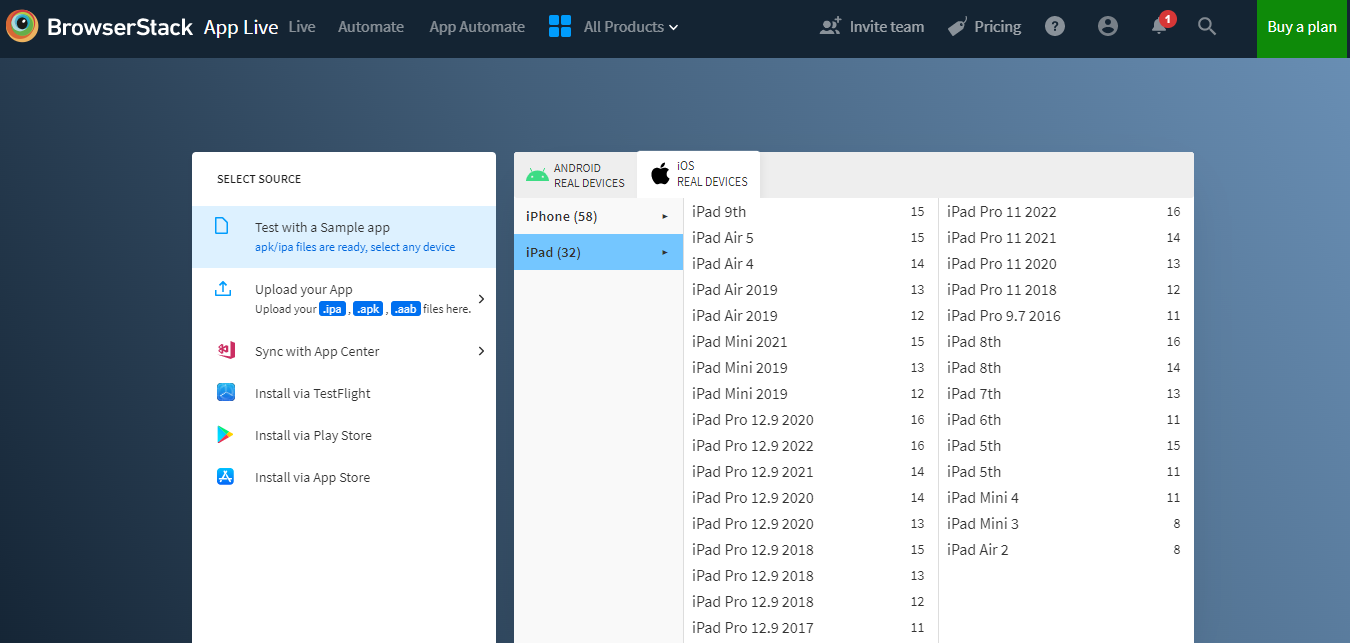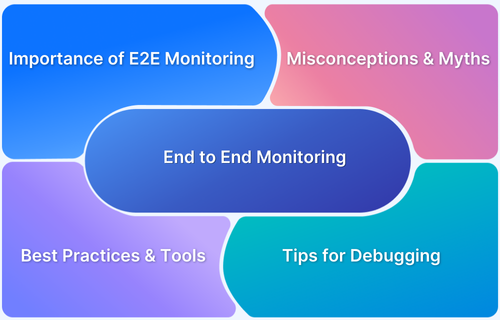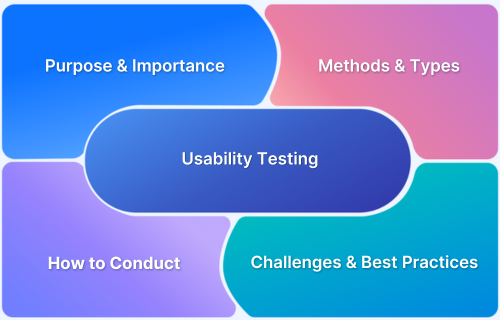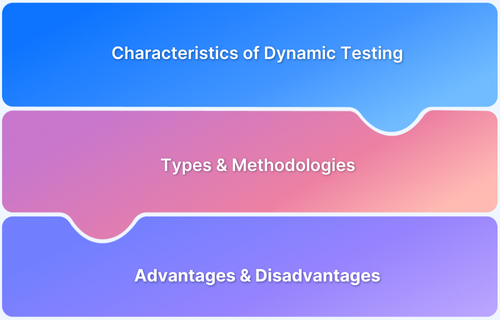As digital experiences grow more complex, ensuring thorough test coverage has become a key challenge in the software development lifecycle.
Overview
What is Exhaustive Testing
Exhaustive testing is a method in which every possible input and path is tested to uncover even the rarest bugs. It plays a vital role in understanding system behavior under all possible conditions.
Key Aspects of Exhaustive Testing:
- Comprehensive Coverage: Aims to test every possible input and scenario.
- Time-Intensive: Involves significant time and effort.
- Practical Constraints: Rarely practical in complex systems with vast input variations.
- Targeted Use: Best suited for smaller systems or where reliability is critical, such as in healthcare and aerospace.
Exhaustive vs. Extensive Testing:
- Exhaustive Testing: Covers all combinations exhaustively.
- Extensive Testing: Covers a broad range of scenarios, but not every single one.
This article will explore exhaustive testing, how it works, the key techniques involved, and how it compares with other testing methods.
What is Exhaustive Testing?
Exhaustive testing, also known as brute-force or complete testing, is a method where every possible input, condition, and scenario is tested to ensure the software behaves as expected in all cases.
This approach leaves no path untested, aiming to eliminate any hidden bugs or issues by validating the system across every possible combination of inputs and execution paths.
Why is Exhaustive Testing important?
Exhaustive testing is significant as it aims to test all possible scenarios and input combinations to make certain that a software system functions suitably under all possible circumstances. This assists to detect defects or bugs that might not be caught by other testing approaches.
- Exhaustive testing is particularly significant in safety-critical systems, where the consequences of a failure or defect can be severe, such as in aviation systems, or nuclear power plants.
- In such cases, it is critical to ensure the system functions properly under each possible condition to prevent catastrophic consequences.
- It is crucial to note that exhaustive testing is often impossible or impractical in numerous software systems because of the huge number of possible input combinations and the restricted resources accessible for testing.
Types of Exhaustive Testing
Some of the commonly used forms of exhaustive testing are:
- Combinatorial Testing: This method of exhaustive testing is based on the observation that the collaboration of two input parameters causes the majority of defects in software systems.
- Boundary Value Analysis: Boundary Value Analysis is a type of exhaustive testing that assists to identify defects that may happen at the boundary values.
- Equivalence Partitioning: It divides the input values into equivalent partitions or groups and tests one value from an individual partition to confirm that all input values have been tested.
- Decision Table Testing: This type of exhaustive testing uses a tabular to represent every possible blend of input conditions & the corresponding output actions.
- State Transition Testing: This testing focuses on testing the software system’s behavior as it transitions from one state to another.
Also Read: Types of Mobile Testing
How to Perform Exhaustive Testing
Steps involved in Exhaustive Testing
The following are the 7 steps included in exhaustive testing:
- Detect Input Parameters: The first phase is to detect all the input parameters that can affect the software system’s behavior. This can include system inputs, environmental inputs, and user inputs.
- Determine Input Ranges: For every input parameter, determine the set of values it can take. This comprises identifying the maximum and minimum values & any other constraints or necessities for the input parameter.
- Generate Test Cases: Once the input ranges and parameters have been recognized, generate test cases covering every possible input amalgamation. This can be done using boundary value analysis, combinatorial testing, decision table testing, equivalence partitioning, and state transition testing.
- Execute Test Cases: Execute the created test cases for testing the software system’s behavior under every possible input combination. This might involve running the testing several times with diverse input combinations.
- Analyze Test Results: Analyze the outcomes of the tests to detect any issues or defects with the software system. This may include comparing the actual outcomes with the projected results for every test case.
- Debug Defects: If defects are recognized, debug them & retest the affected zones of the software system to ensure that the defects have been resolved.
- Report Findings: Ultimately, report the testing findings to the relevant stakeholders, counting any recognized defects and the steps taken to solve them.
Example of Exhaustive testing
Here’s a simplified example of exhaustive testing using a login form:
If the username accepts alphanumeric characters and the password allows letters, numbers, and special characters, exhaustive testing would mean trying every possible valid and invalid input combination for both fields.
For instance, if the username field accepts up to 10 characters and the password field accepts up to eight characters, the total no. of possible input combo would be:
- Username: 62^1 + 62^2 + … + 62^10 = 839,299,365,868,340,224 probable blends.
- Password: 94^1 + 94^2 + … + 94^8 = 6,634,204,312,890,625 probable blends.
Hence, to conduct exhaustive tests, we would require to test all 839,299,365,868,340,224 * 6,634,204,312,890,625 = 5.5790578e+31 possible input combinations. This number is so vast that it is impossible practically for testing each possible variety manually or using old testing techniques.
In practice, varied testing techniques such as equivalence partitioning, boundary value analysis, and combinatorial testing can be used to lessen the no. of test cases needed for exhaustive testing while still attaining a high automation test coverage.
Why Complete Exhaustive Testing Is Not Feasible
Exhaustive testing aims to cover every possible input and scenario, but several limitations make it impractical:
- Too Many Input Combinations: Real-world applications have countless input variations, making full coverage unrealistic.
- Time Intensive: Testing every scenario takes too much time and resources for most projects.
- High Complexity: The number of test paths increases rapidly, making execution and management difficult.
- Design Limitations: Certain system behaviors or static variables restrict test coverage.
- User Variation: It’s impossible to test every user type, device, or usage pattern.
- Unpredictable Environments: External conditions like hardware or network changes are hard to simulate fully.
- Manual Testing Constraints: Exhaustive manual testing is labor-intensive and error-prone under time pressure.
Strategies for Exhaustive Testing
Here are the key strategies for exhaustive testing:
- Boundary Value Analysis: This technique aims to identify any errors that may occur at the boundaries of the input range.
- Use of Test Automation Tools: Test automation tools can be very beneficial to conduct exhaustive testing. Using automated testing tools, QA teams can achieve comprehensive test coverage, enhance testing competence, and deliver top-quality software.
- Combinatorial Testing: Combinatorial testing is useful when there are multiple input variables, and testing every combination is not feasible. It can considerably reduce the multiple test cases required to attain the desired level of test coverage.
- Equivalence Partitioning: The objective is to minimize the number of test cases needed while maximizing the test coverage.
But, it is essential to note that equivalence partitioning alone is not a strategy. Different testing techniques, such as combinatorial testing and boundary value analysis, can be used in conjunction with equivalence partitioning to achieve exhaustive testing.
You can also automate your formal test process by choosing BrowserStack, which can minimize time and effort. Access the robust testing infrastructure to ease your browser and app tests.
Exhaustive Testing vs Exploratory Testing
Here’s a comparison between Exhaustive Testing and Exploratory Testing:
| Criteria | Exhaustive Testing | Exploratory Testing |
|---|---|---|
| Test Coverage | Tests every possible input scenario and combination. | It focuses on testing zones where flaws are most likely to be found. |
| Test Effectiveness | Highly effective in finding defects | Effective in detecting defects, but less inclusive than Exhaustive Test |
| Time and Cost | Expensive & Time-consuming and | It requires small resources and is less expensive |
| Real-world scenarios | Might not cover all real-world scenarios | May cover real-world scenarios |
| Suitability | Appropriate for small input domains | Appropriate for intricate systems and large input domains |
| Automation | Not easily automated | Can be partly automated |
| Risk Reduction | Highest risk reduction | Moderate risk reduction |
Also Read: Exploratory Testing: A Detailed Guide
Exhaustive Testing vs Ad-hoc Testing
Here’s a comparison between Exhaustive Testing and Ad-hoc Testing:
| Criteria | Exhaustive Testing | Ad Hoc Testing |
|---|---|---|
| Test Coverage | Exhaustive Testing, you learn & test the software at the same time. | Ad Hoc Testing implies learning the software in advance before its testing. |
| Documentation | To assure the quality it’s essential to document the detail of the testing. | Documentation is not a basic need of this form of testing. |
| Real-world scenarios | Might not cover all real-world scenarios | Might cover some real-world scenarios based on the engineer’s intuition |
| Suitability | Appropriate for small input domains | Appropriate for rapid testing, exploratory testing, or complementing other testing approaches |
Read More: The Complete Guide to Ad hoc Testing
Exhaustive Testing vs Effecting Testing
Here are the key differences between exhaustive testing and effective testing.
| Parameter | Exhaustive Testing | Effective Testing |
|---|---|---|
| Definition | Involves testing every possible input and scenario in the system. | Focuses on validating key functionalities within the available resources. |
| Feasibility | Not practical due to the infinite combinations and time constraints. | Realistic and achievable within project constraints. |
| Time | Highly time-consuming and labor-intensive. | Time-efficient and targeted. |
| Approach | Theoretical in nature; rarely executed in full. | Practical, with real-world test execution. |
| Cost | Expensive due to the scale and depth of test coverage. | Cost-effective and aligned with most project budgets. |
| Scope | Covers every possible test case and condition. | Prioritizes high-impact areas and critical user flows. |
Advantages of Exhaustive Testing
Exhaustive testing is a testing approach that aims to test all possible combinations of scenarios, paths, and inputs of a system under testing. Some benefits of exhaustive testing that are worth considering are as follows:
- High Test Coverage: Exhaustive testing makes sure that all possible combinations of scenarios, inputs, and paths are well-tested, which results in the maximum test coverage. This means that a higher percentage of flaws can be found & fixed before the item is released.
- Increased Confidence: Exhaustive testing gives software developers and testers enhanced confidence that the product has been well-tested and has no undiscovered defects.
- Improved Quality: This testing can enhance the product’s quality by finding flaws that may not be discovered through different testing approaches.
- Great Customer Satisfaction: By finding & fixing defects before the product is launched, customer satisfaction can be enhanced. This can result in increased consumer loyalty and repeat business.
Challenges in Exhaustive Testing
Here are the challenges of exhaustive testing:
- Limited Scope: Exhaustive testing might not cover all possible scenarios and input combinations because of the vast number of potential input values. This can result in some flaws not being identified or missed during testing.
- Time & Resource Intensive: Needs a noteworthy amount of time & resources to test all possible scenarios and input combinations. This can be impractical for complex and large software systems.
- Overfitting: This might result in overfitting, where the test is focused on particular input scenarios and combinations rather than the software’s overall functionality.
- Maintenance: Maintaining and upgrading exhaustive test cases can be perplexing, especially when modifications are made to the software system.
- Redundancy: Some test cases in the exhaustive tests might be redundant and not add value to the complete testing effort. This can result in pointless testing and consume extra resources without substantial benefits.
- False Confidence: The all-inclusive nature of testing can create a false sense of confidence that all possible input scenarios and combinations have been tested, resulting in the assumption that the software system is error-free.
Best Practices for Exhaustive Testing
Here are some key practices to follow when conducting exhaustive testing:
- Define Clear Test Cases: Identify all possible input scenarios, edge cases, and conditions the software may encounter to ensure comprehensive coverage.
- Automate Where Possible: Use automation tools to handle repetitive testing tasks, speeding up the process and reducing human error.
- Focus on Core Functionality: While exhaustive testing covers many inputs, ensure critical features are tested more rigorously and efficiently.
- Use Boundary Testing: Prioritize boundary values for input fields, as they often reveal issues typical test cases may overlook.
- Resource Management: Allocate sufficient resources (time, budget, tools) to ensure thorough testing, but with an understanding of the constraints.
- Iterative Testing: Regularly test the software in incremental stages, adjusting your test scope as development progresses.
Conclusion
Exhaustive testing, while comprehensive, may not always be feasible due to its time and resource demands. Combining other testing methods, like exploratory or ad hoc testing, can provide more practical and efficient results in complex systems.
Adopting a balanced approach with the right tools and a strategic testing plan ensures that your software achieves the highest quality standards while effectively managing time and costs.








